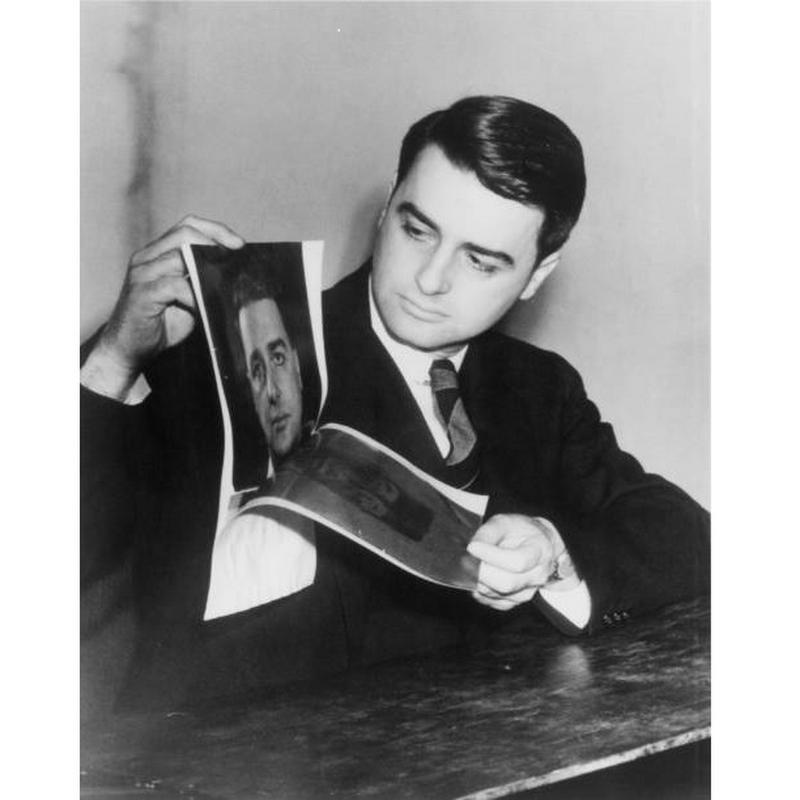Polaroid: Shrinking The Darkroom To The Size Of A Camera
By | December 19, 2022

For most people, the word “Polaroid” conjures memories of photographs with a white border, and if you were alive during a particular era, it will stir memories of the camera’s sound or of shaking the image to help it dry. If you looked closely at old Polaroid cameras, you’d see the word “Land.”
He Worked On Numerous Projects
Edwin Land (1909-1991) was responsible for this delightful creation of instant photography, which came to be simply called “Polaroid.” Land did more than just invent a quick way to provide us with almost instant photographic gratification. He also worked on other transformative technologies and contributed to federal research activities both during and after World War II.
Safer Driving At Night
From the time he was young, Land was fascinated by light, and around the age of 13, he started to work on synthetic polarizers. He had set out to discover something to improve the safety of nighttime driving, and reasoned that if manufacturers could use polarizers in headlights and windshields, headlights could safely be made brighter.
Polarization
Polarization, the process that gives the camera and picture its name, occurs when light waves move forward, vibrating at every possible angle. The polarizer has long, thin parallel openings, allowing only parallel angles of light through. Hence, the polarizer selects light waves with particular orientations.

He Left Harvard
Although he began his study of physics at Harvard in 1926, he left and began studying physical optics independently at the New York Public Library. He also conducted secret experiments at Columbia University. Building on the work of British chemist and surgeon William Herapath (1820-1868), he developed a polarizing sheet in 1929, eventually commercially producing the sheets.
Forming Polaroid
Land then formed Land-Wheelwright Laboratories in Cambridge, Massachusetts, with his colleague, George W. Wheelwright III. The company produced polarizers for use in photographic filters, glare-free sunglasses, and stereoscopic products to create 3-D images. In 1937, their company went public, becoming the Polaroid Corporation.
Helping To Win The War
With America’s anticipated entry into World War II, Land decided to shift Polaroid’s focus to manufacturing technologies to assist the country in winning the war. They began manufacturing anti-glare goggles, gun sights, viewfinders, cameras, and other devices with polarizing lenses. Earlier, Polaroid had developed a novelty item, the vectograph, but the military was able to use it to visualize geographic features of battlegrounds. Later, Land would work on Cold War technologies.
Inspiration From A Three-Year-Old
While on a family vacation, he took a picture of his three-year-old daughter Jennifer. During this time, it took several days to process film, from the time it was dropped off at a specialized laboratory. Jennifer wanted to see the picture instantly, which wasn’t possible at the time. He then took a walk to think through the problem, and as he later said, “within an hour, the film, and the physical chemistry” became clear, and his company had the requisite expertise to produce this new technology. However, he also wanted to achieve the artistic excellence professionals demanded, so he hired art historians to work for Polaroid, who blended both art and science.

The Darkroom Was In The Camera
The polaroid used the same basic principles as traditional photography, but Land’s system contained the negative film, as well as the positive receiving sheet. Within the film unit was something called a pod that held the chemical reagents. As the film was released, rollers in the camera ruptured the pod and spread the chemicals over the film. The chemicals worked to expose the image.
It Was A Hit
The camera remained secret from 1943 to 1946 as they worked to resolve challenges and get it ready to go to market. They revealed their creation to the public on February 21, 1947, and the first polaroid camera, the Model 95 (and the requisite film) went on sale in 1948, selling out in minutes in a department store in Boston. These first images produced by the Model 95 were sepia toned, and the true black and white versions came in 1950, although they required a manual swab with a polymer coating. Throughout the decade, the quality of the polaroids improved to the point that The New York Times said in 1957 that they were “equal in tonal range and brilliance to some of the finest prints made by the usual darkroom routine.”
Creating Color Photographs
The next step was to create color instant photography, a much more complex process than creating black and white images. Along the way, they encountered a number of challenges, including image permanence. By 1963, the color film was ready to debut. Their greatest achievement was yet to come, with the 1972 release of the SX-70, a true one-step camera, as all the photographer had to do was to take the picture with no more peeling and swabbing to reveal the photo. They created an extremely complex system to give people instant gratification.